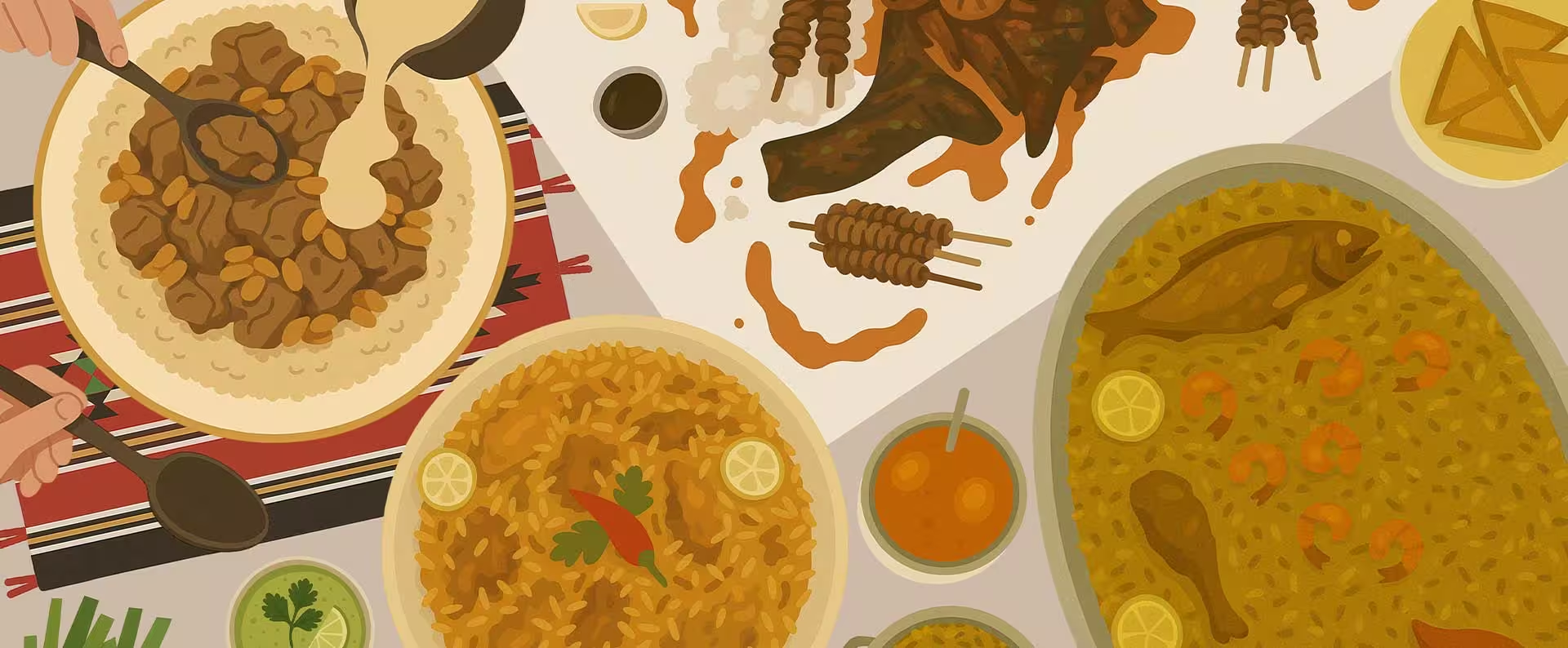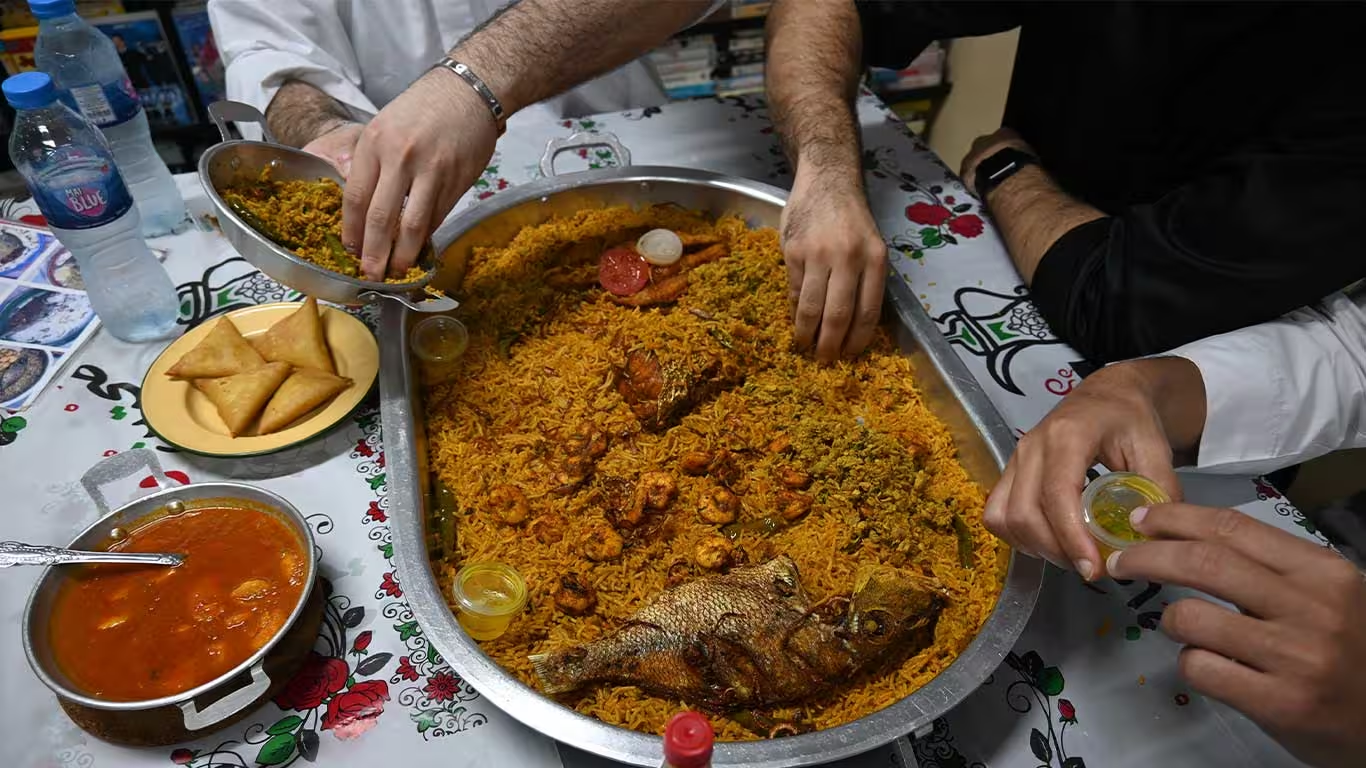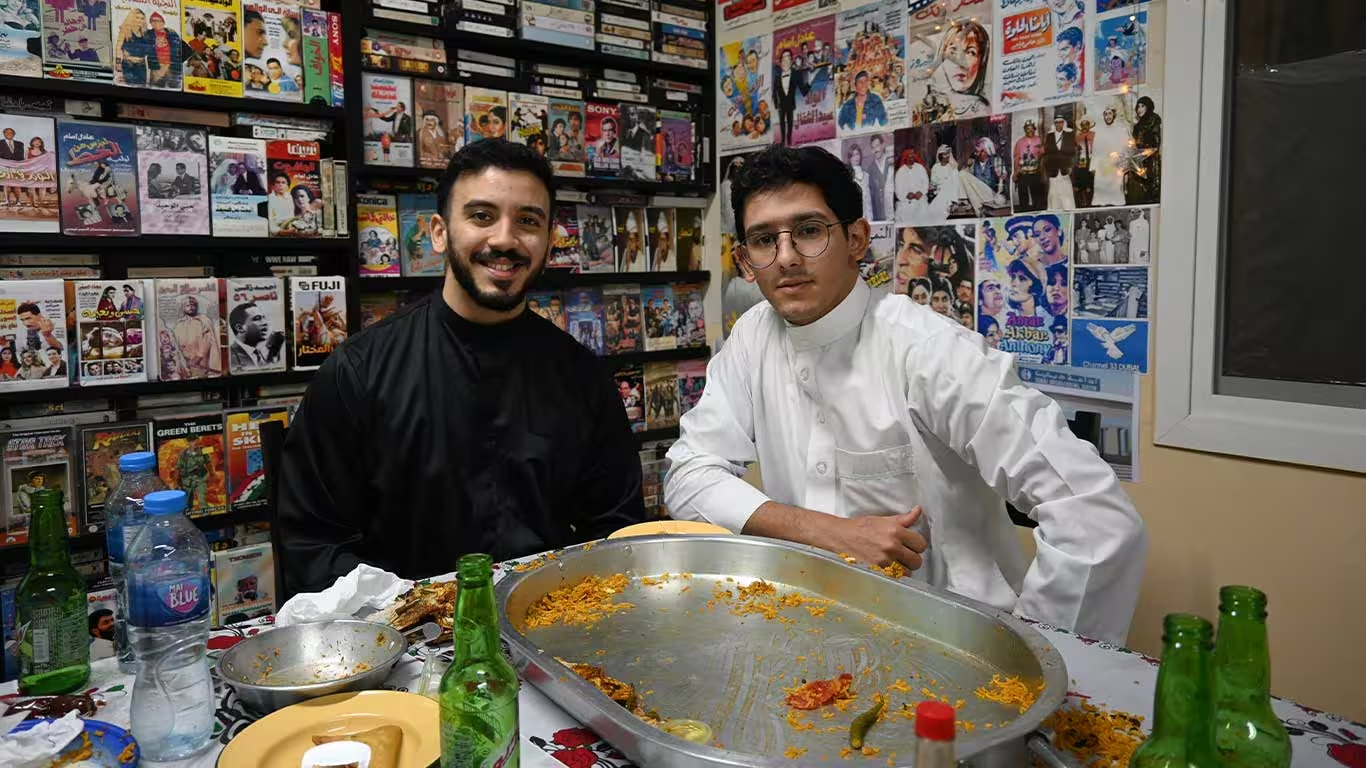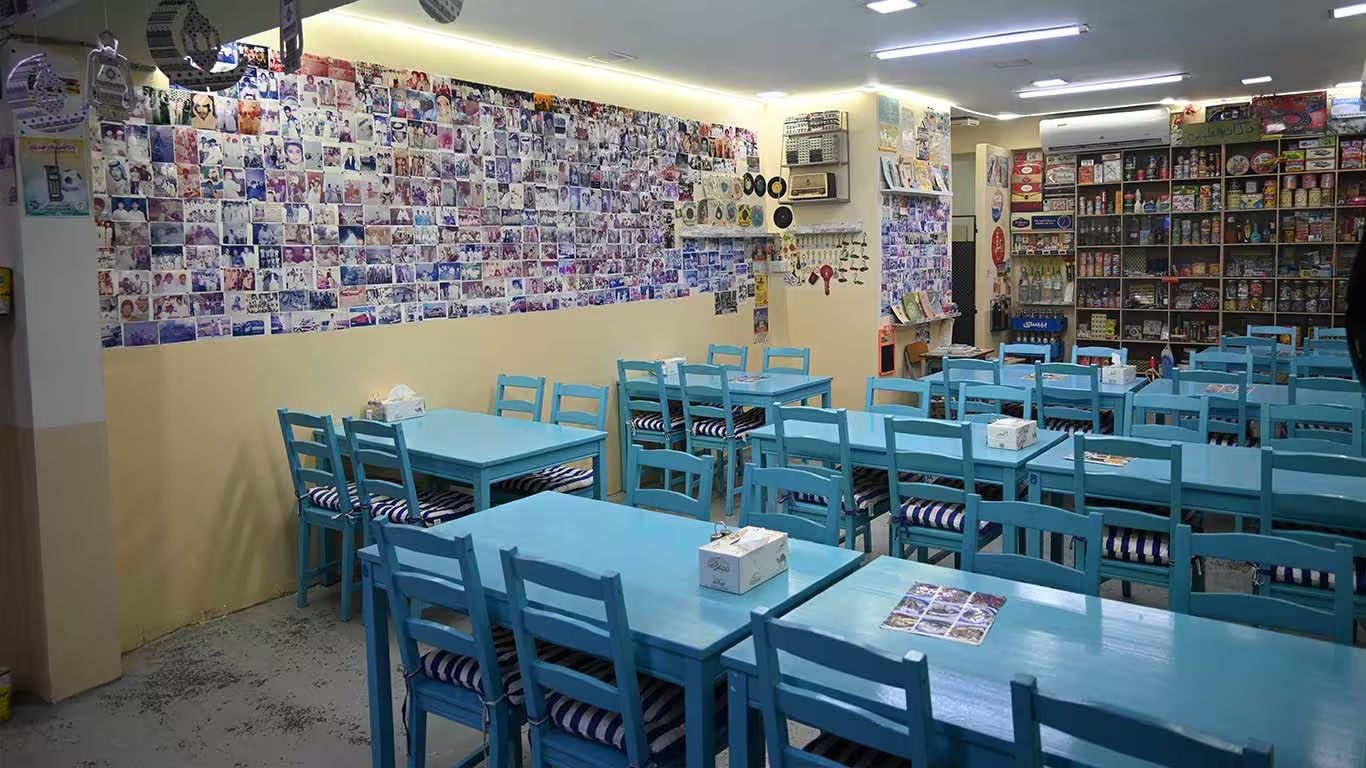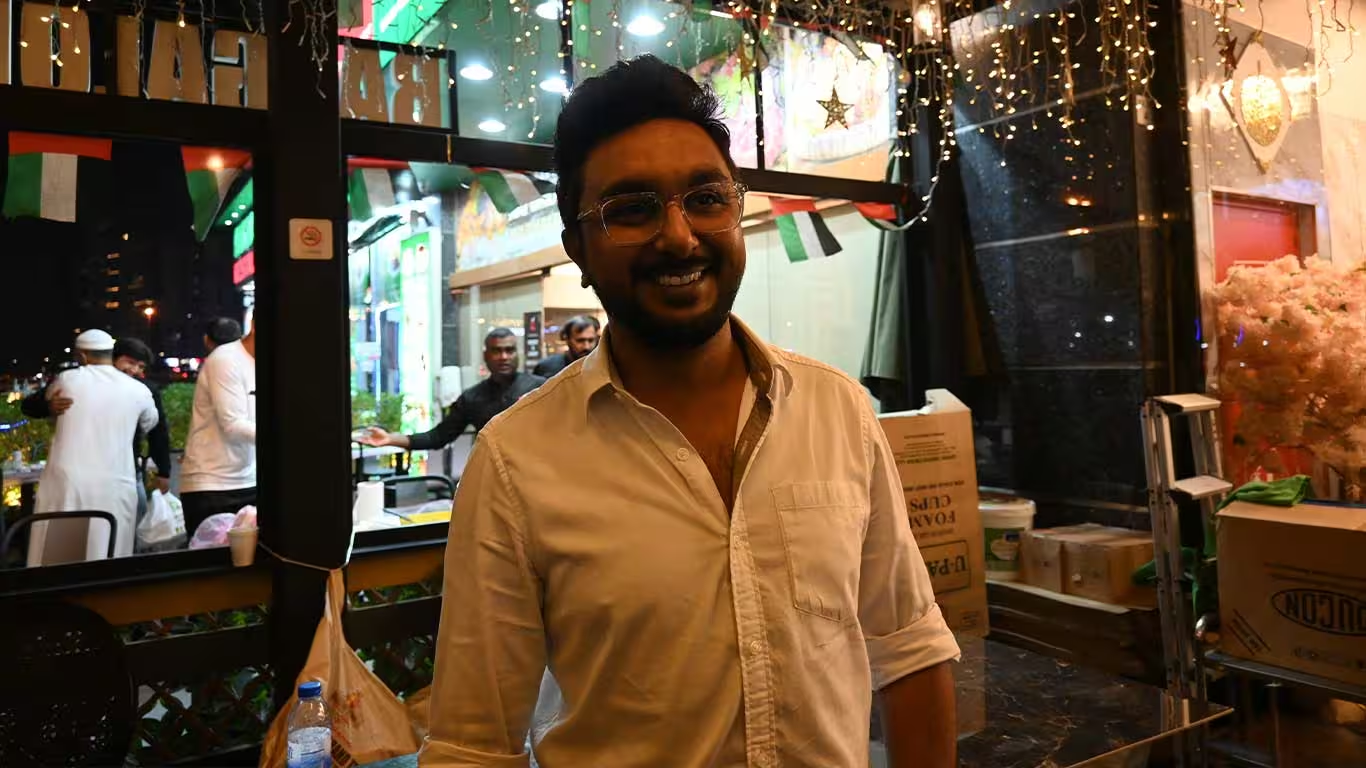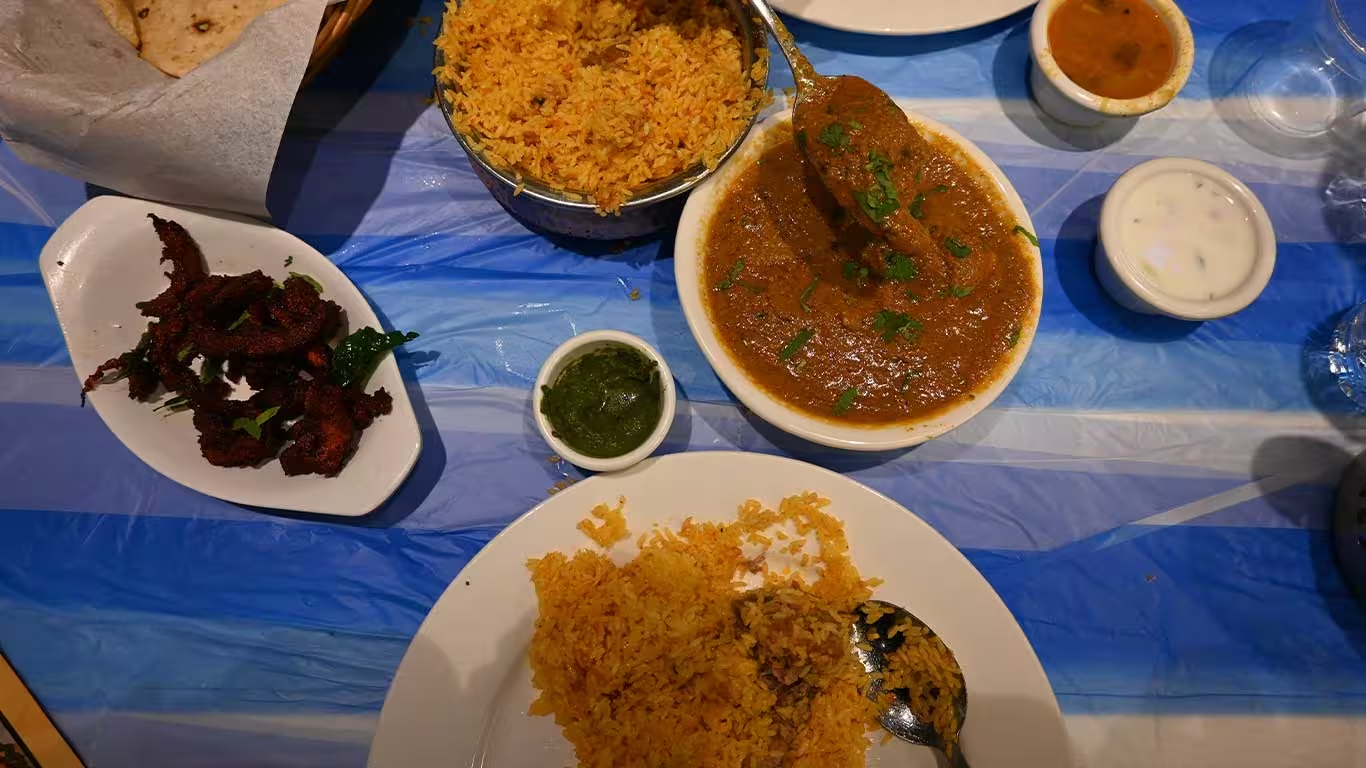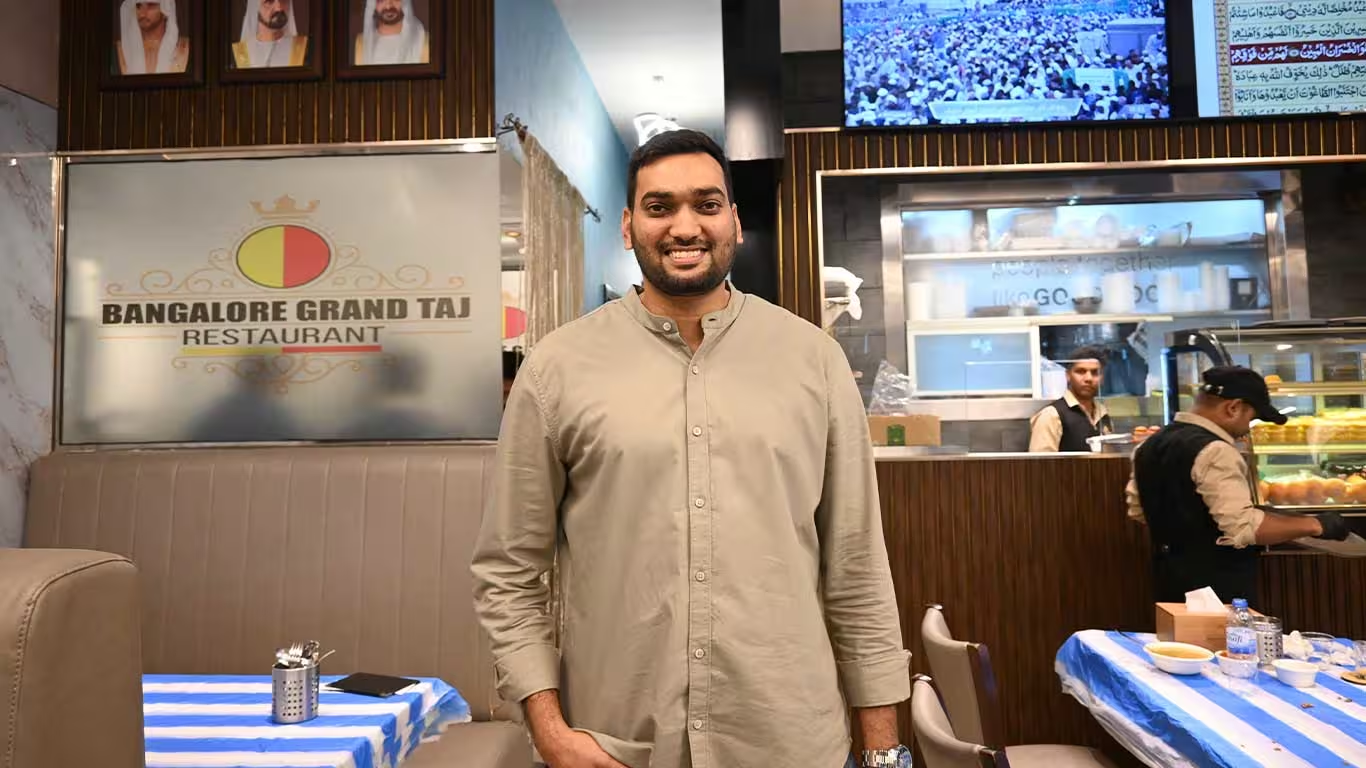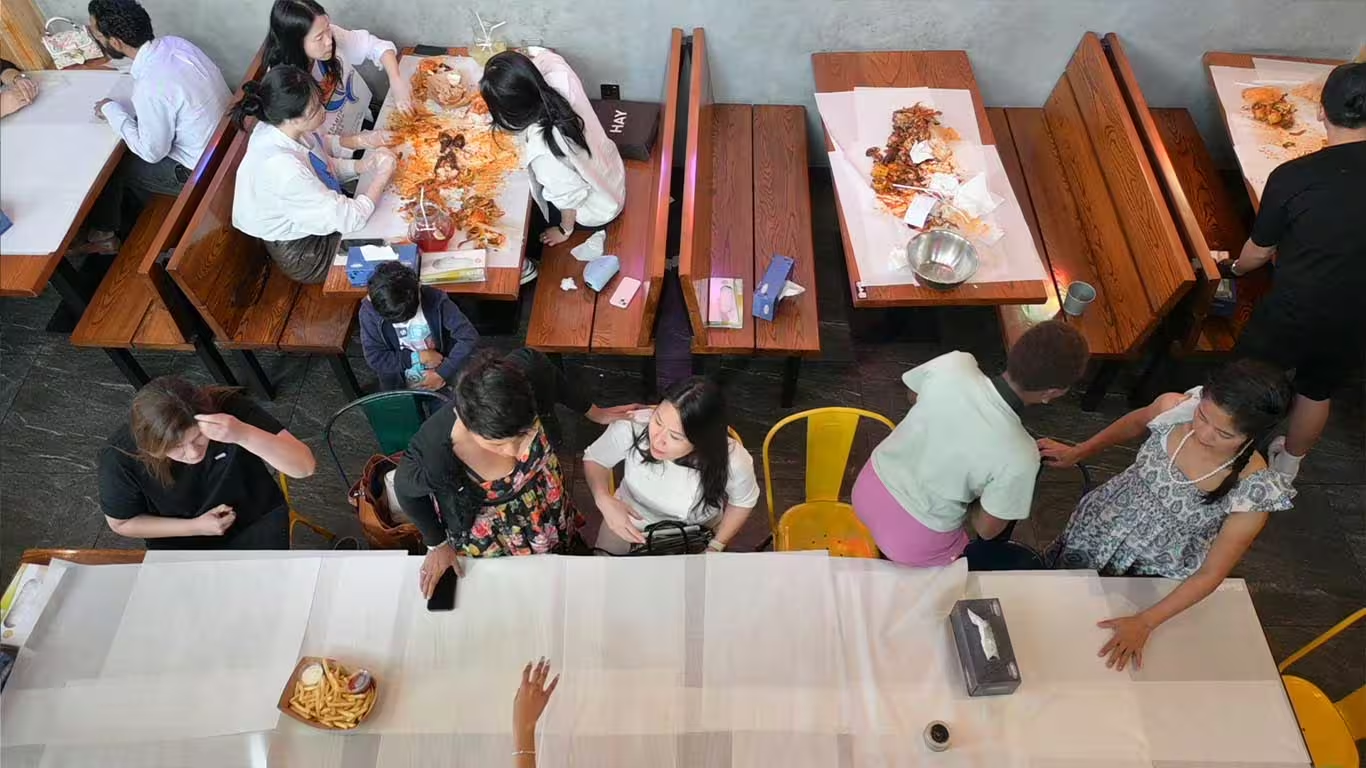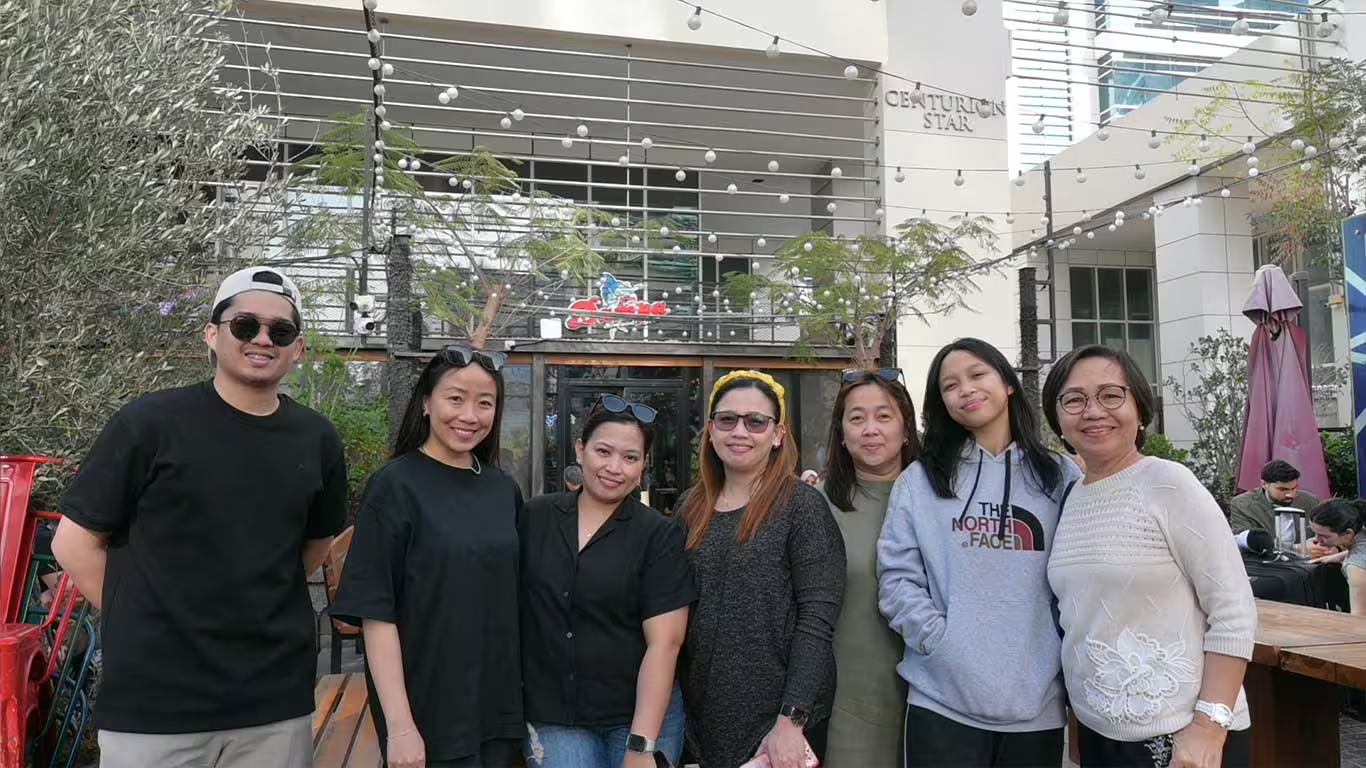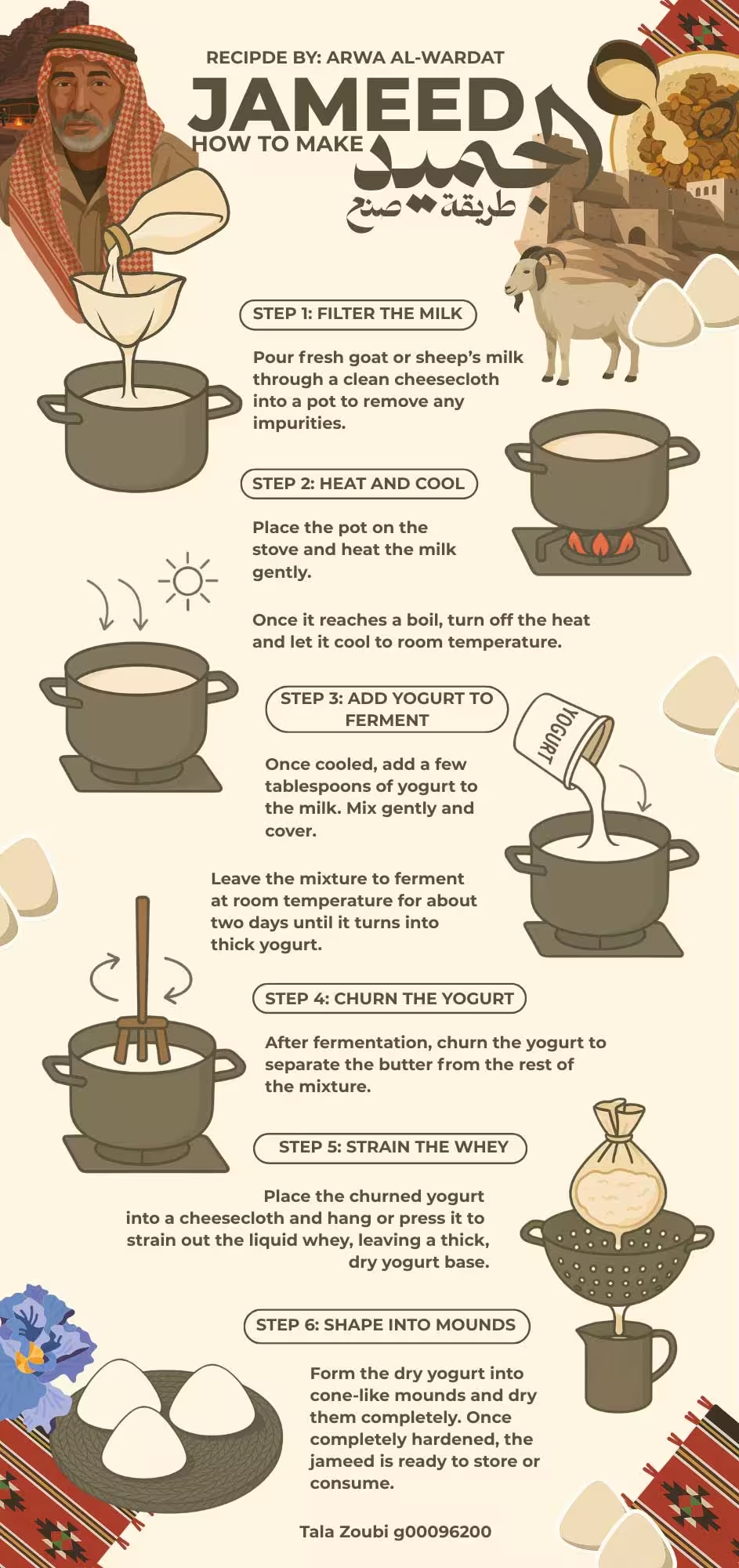By Tala Zoubi
Sharjah – Entering the hotel ballroom, I was instantly engulfed by color, music, and the warm aroma of spices and roasted meat. A Filipino-Jordanian wedding, unlike anything I had ever experienced, where laughter echoed, and tradition thrived.
A buffet of over 20 rice dishes stretched out like a cultural patchwork. I walked through it in awe, my plate trembling slightly in my hand while passing giant pots of Emirati machboos, Indian biryani, Jordanian mansaf crowned with a sheeps head, and a Filipino boodle fight table, with rice and grilled seafood on banana leaves.
Each spoonful felt like slipping through someone else’s memory: a bustling Manila street corner, a quaint family-owned restaurant in Amman, and Friday family gathering in a Majlis in Abu Dhabi. Rice wove us together, celebrating love.
With over 200 nationalities, the United Arab Emirates shapes a vibrant cultural mosaic. From the bus driver steering through morning traffic to the chef plating dishes in a five-star hotel, their food traditions build micro-communities.
Food, especially rice, reflects the UAE’s diverse demographics across every emirate, city, and neighborhood. A staple for over 3.5 billion people worldwide, rice binds the UAE’s 10 million residents. More than sustenance, it carries memory, migration, and meaning.
Whether it’s the communal spirit of a Filipino kamayan, the flavor complexity of Indian biryani, the historic Jordanian mansaf, or warm Emirati machboos, rice transcends food, marking identity, history, and belonging. It becomes a marker of identity, a thread of history, and a symbol of how people find home in unfamiliar places.
Emirati Machboos
“Machboos brings warmth and good memories that keep things alive,” says Mira Lootah, Emirati associate director at HSBC, explaining its cherished role in Emirati culture.
Emirati cuisine, shaped by trade, climate, and history, evolved from Bedouin reliance on the sea.
Despite rice’s prominence in traditional meals, it’s not native to the UAE’s arid climate, where dates dominate local agriculture. Eighteenth-century trade introduced rice and spices from India, shaping Khaleeji cuisine.
“Its a reflection of the available resources in the old days. Rice which we used to get from india which showcases the trade between the two countries that goes way back. The dish is mostly cooked with fish naturally as the most available source of protein from the sea, and it’s also a reflection to the tight relationships we had within the gulf,” Lootah says.
Machboos is a rice dish popular in the gulf, basmati rice is cooked in a rich broth made from seafood, chicken or mutton, and flavored with bezaar (spice mix) and dried lime. In the UAE, coastal geography makes seafood machboos common. “Its a dish that’s cooked on any normal day in an emirati house and in massive amounts and using extra spices for certain occasions,” Lootah says.
Spices and proteins vary by emirate, city, or household. “Each mother or maid adds her own touch,” she added.
Flydubai flight attendant, Nassim Hessas says, “I interacted with so many people in the UAE. Khaleejis, Jordanians, Palestinians shared with me their rice dishes but by far machboos was my favorite.”
Nassim Hessas, 24, and Soheib Matouk, 25, Algerian expats, frequent traditional UAE restaurants for flavorful, affordable meals as they navigate the challenges of building their careers. “Machboos is light and the flavors are not as harsh as other rice dishes like biryani, mansaf or mandi,” says Matouk, born and raised in Dubai.
Machboos is traditionally eaten by hand from a shared tray, a practice preserved in Emirati restaurants.
Toast the spices in machboos, and the scent carries you across the Arabian Sea.
Indian Biryani
India, with 1.4 billion people and 28 states, stretches from the Himalayas to the tropical Malabar Coast, and is home to over 30 biryani variations.
Biryani is a mixed rice dish, uses lightly fried basmati rice—though varieties like Zeerak Samba, Seeraga Samba, Sona Masoori, Shruti Kollam, Sela, or jasmine are regional—cooked in a haandi (clay or copper pot), says Sabah Zaheer, a 20-year-old Bangalore native and American University of Sharjah student raised in Dubai.
Proteins range from mutton, chicken, and seafood to paneer for vegetarians. The masala, a vital spice mix that defines the dish, varies by region, affecting color, aroma, and flavor. “Layered or mixed, masala distribution differs across India’s towns,” Zaheer says. As it steams, meat or vegetable juices and masala infuse the rice.
The name originated from the Persian words “birinj” (rice) and “biryan” (to fry or roast), and reached India through the Mughal Empire in the 15th or 16th century, blending Persian pilaf with local spices and techniques, per the Times of India.
Its plural identity evolves.
Bangalore, the capital of the southern Karnataka state has a completely different biryani flavour profile than Hyderabad, in southern India. Bangalore’s short-grain biryani, mixes the masala in to every grain of rice, giving the dish a more mellow flavor, unlike the layered Hyderabadi biryani, Zaheer says. Expatriates like Zaheer transform UAE neighborhoods into bazaars and homes that resemble those in South Asia.
“It’s a taste of home,” says Syed Pasha, an auto insurance underwriter.
“Getting the authenticity and taste of your moms handmade food in UAE, its really difficult and thanks to these guys they’ve opened the restaurant and trust me, whenever we feel home sick we are always here.”
Pasha frequents Bangalore Grand Taj restaurant with friends for authentic Bangalore-style mutton biryani, a specialty, says owner Syed Mahdi.
Mahdi, who moved to Dubai with his wife, opened the restaurant to offer Bangalore’s unique flavors, rare in UAE Indian restaurants.
From Al Nahda’s slow-cooked biryani to Deira’s kamayan feasts, rice connects diverse cultures.
Filipino Kamayan/Boodle Fight
“Rice is everything for us. It’s like water. If we don’t have rice we can’t live,” says Dereck Tejada, a Filipino barista at Al Bareed Café.
Rice, eaten with fruits to fish, is central to every Filipino meal, says Tejada, who moved to the UAE in 2019 to work with his brother. “Boodle fight is the traditional dish and symbolizes togetherness, while the action of eating with our hands is called kamayan though terms are interchanged,” he says.
Kamayan, a Tagalog word meaning “with your hands.” dates to pre-colonial Philippines, when communities ate hand-to-mouth, Tejada says. Spanish and American colonizers discouraged it, but Americans revived it as the “boodle fight” in the early 1900s, symbolizing camaraderie, per the BBC. Some view “boodle fight” as derogatory, failing to honor communal dining’s dignity.
A traditional boodle fight features grilled meats, seafood, eggs, vegetables, and tropical fruit on banana leaves, centered on fragrant, sticky jasmine rice. In the UAE, where pork and some Filipino ingredients are unavailable due to climate or religious dietary restrictions, restaurants create fusion dishes.
At Dampa Seafood Grill, a fusion boodle fight style feast focuses on locally caught seafood with sauces, served on wax paper with gloves, alongside Filipino street foods like isaw (barbecued chicken intestines), chicharon manuk (crispy chicken skin), and inihaw na panga tuna (grilled tuna jaw).
Alexa De Jesus, a Filipino administrative assistant, and her daughter Thamina, a Dubai middle school student, visit Dampa for unlimited rice and indulgent seafood.
“Even in the UAE when you go to a Filipino party, there’s always rice because if there’s no rice, then people will not be happy and the meal’s incomplete,” says Alexa, a working mother.
For Filipinos, rice is not just a daily staple, it’s a labor of love and symbol of safety.
“My day would be incomplete without rice, it is such a big thing for me,” says Thamina. “We always have rice because she comes home alone. It’s really important for us to eat rice especially at lunchtime,” Alexa adds.
Filipinos pair their favorite starchy grain with sweet or salty dishes. Alexa, who has diabetes, uses basmati rice for its lower glycemic index.
Merle Antonio, Filipino administrative assistant, known affectionately as Ate (older sister), says, “Filipinos sometimes eat rice alone, as long as it is well-cooked and high-quality”.
Jordanian Mansaf
“This dish is woven into my identity and culture in profound ways that I feel with every shared plate, ” says Tebyan Al-Gharaibeh, an education administrator from Huwwara, Jordan.
Whether served in a cup or on a tray, mansaf has stood the test of time.
“One of my most cherished childhood memories is from my cousin Khaled Alhadda’s wedding. We spent Thursday night at my aunt’s house to help prepare the ingredients for Mansaf. That night, my dad and the other men slaughtered the lambs and prepared the meat for cooking, while my mom and the rest of the family soaked the jameed, singing traditional songs,” she says.
Rice, meat and Jameed are the three components that create a symphony of flavors that is considered a taste of home.
The sour taste of fermented, dried sheep’s milk used to make Jameed, is what distinguishes it as Jordan’s national dish. The ingredient is also used across the Levant in dishes like shakriyeh, ka’akeel and ar-rashoof.
“Through using the finest meat and highest quality jameed, the dish becomes a physical expression of our welcome and care,” Al-Gharaibeh says.
From Irbid to Aqaba, Mansaf is at the hearts and in the hands of Jordanians, bringing together families and friends.
“The sensory experience of Mansaf triggers powerful memories for me. The distinctive aroma of the richly spiced melaheyah (jameed) and the tender lamb create an unmistakable scent that immediately transports me to important moments in my life—family gatherings during Eid, celebrations of achievement, and reunions with loved ones,” she says.
As the eldest daughter of seven siblings, Al-Gharaibeh learned recipes as her mother’s right hand, carrying them abroad.
Saif Al Jarrah, a university student from the northern city of Irbid raised in the UAE, says mansaf embodies Jordanian identity. His family gathers biweekly in Sharjah, ship jameed from Jordan and seek out the best ingredients to prepare the dish, to fill their stomachs and souls.
“Mansaf is in its own class, unlike mandi, madhbi, or biryani,” Al Jarrah says.
Recognized by UNESCO as Jordan’s intangible cultural heritage, mansaf dates to the 9th century BCE, when King Mesha of Moab boiled meat in milk, per the Moabite Stone. Folklore says it identified Israelites, who avoided meat-dairy mixes due to kosher laws, Al Jarrah recalls.
“I remember the laughter, stories, and sense of togetherness that always accompany these meals,” says Al-Gharaibeh.
In the UAE, rice symbolizes cultural survival and community. From Al Khalidiyah to Dibba, shared machboos platters, boodle fights, biryani pots, and mansaf trays tell stories of migration, memory and home.
Each grain, cooked with love and adaptation, preserves identity and fosters belonging in a land of coexistence.



